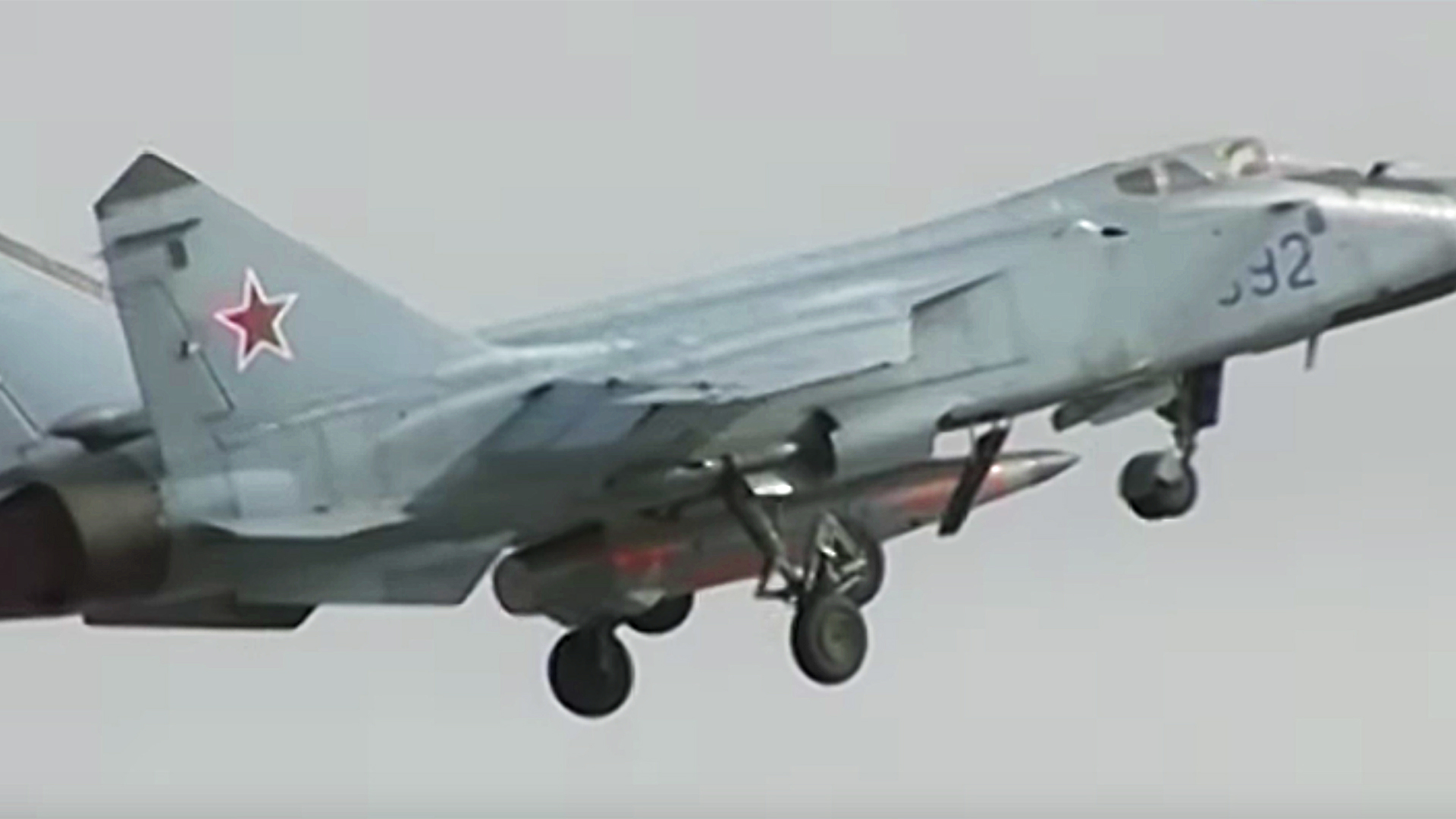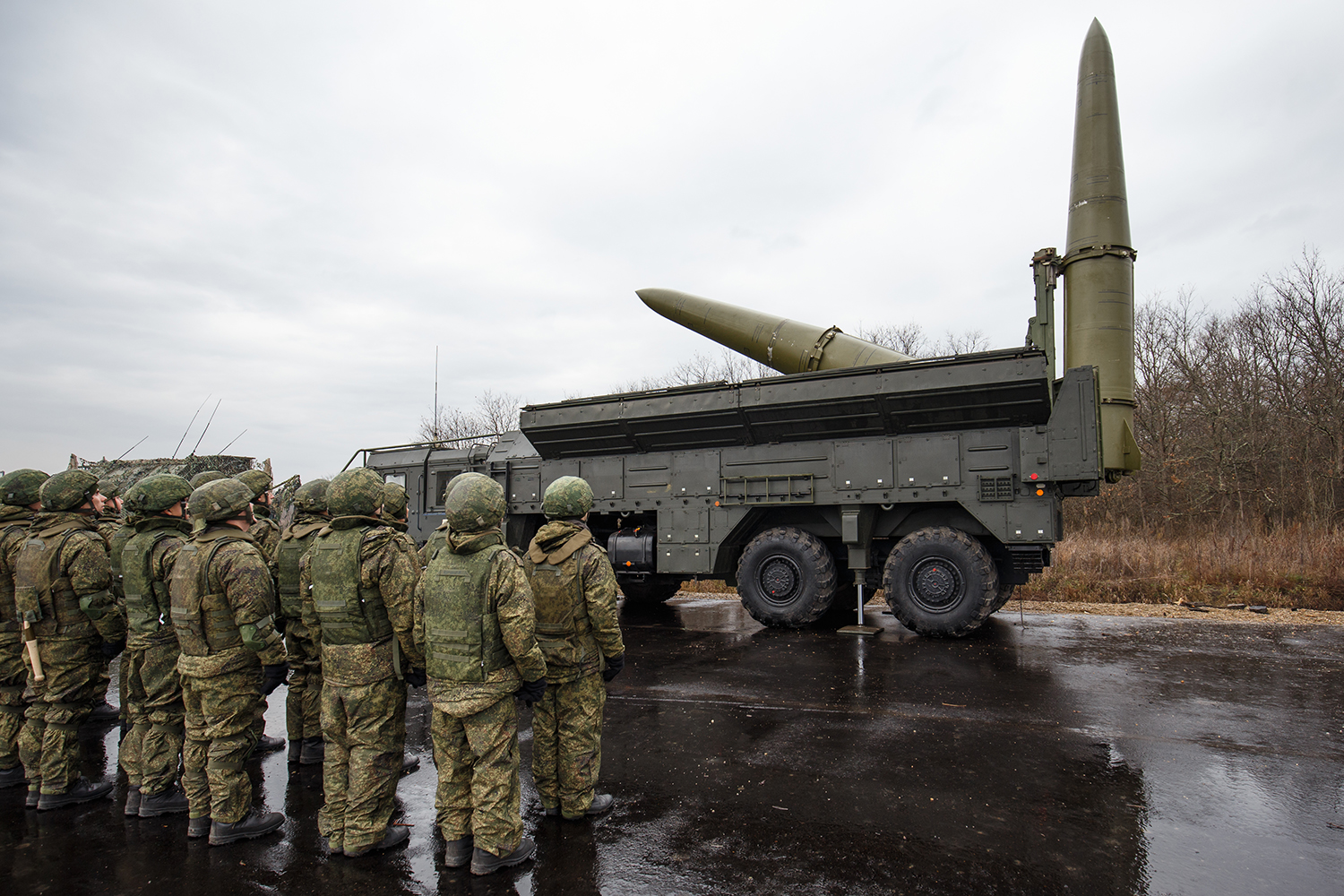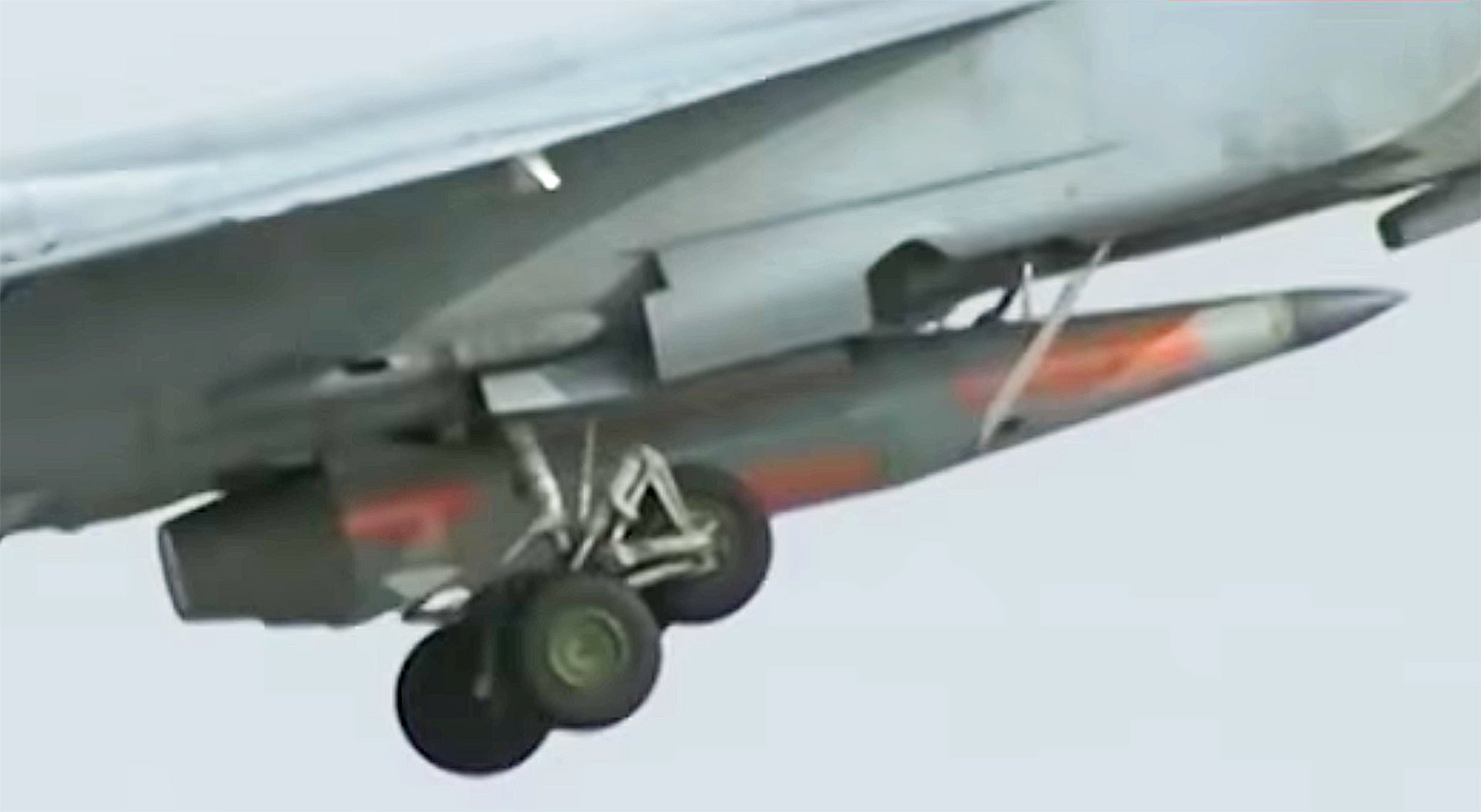Yesterday’s bizarrely ominous presentation by Russian Vladimir Putin, where he showcased six super weapons that will supposedly give Russia an asymmetric edge over its potential foes—namely the United States—is still reverberating throughout the national security community. After we posted our master recap of the event and the weapons concepts featured in it, we and our incredible discussion crew here at The War Zone went to work dissecting what was presented in an attempt to parse fact from fiction.
One system in particular that Putin touted seems to share a peculiar level of commonality with one of Russia’s most prominent operational weapons—the Iskander short-range tactical ballistic missile.
One of the weapons touted in Putin’s speech was an air-launched hypersonic anti-ship missile launched from the belly of a massive MiG-31 Foxhound. Upon closer examination, one of our commenters “Idunknown” noted that it looked exactly like an Iskander ballistic missile. We took a closer look and after doing a proportional/dimensional analysis of the missile in relation to the Foxhound we came to the same conclusion. In fact, the missile doesn’t even look that highly modified, although it’s exhaust fairing, which drops off during launch, throws off the Iskander’s signature profile a bit at first glance.

The Iskander and its newest variant, the Iskander-M, are not air breathing missiles. They use solid rocket fueled motors to propel them on their ballistic arcs. Yet Russia claims its new hypersonic missile has a flight profile like that of a cruise missile. All this begs the question is this missile actually an air-launched ballistic missile system?

The Iskander missile is hypersonic by its very nature, but it doesn’t achieve that through a long flat flightpath. Supposedly this missile system is named the KH-47M2 Kinzhal, and Russia’s Aerospace Force Commander-in-Chief Sergei Surovikin described it to reporters following Putin’s address as such:
“The Kinzhal system substantially boosts the capabilities of the Russian Aerospace Force to respond to any possible act of aggression against our country and along with other strategic weapon systems will help deter possible adversaries from rushing headlong into action… The fast-speed fixed-wing carrier allows delivering a missile with unique performance characteristics to the area of its discharge within minutes. The main propulsion unit mounted on the aero-ballistic missile accelerates a warhead to hypersonic speed within seconds. The missile’s maneuvering at speeds exceeding the speed of sound by several times allows it to reliably breach all air defense and anti-ballistic missile defense systems that exist or are being developed.”
The general went on to say that the missile’s seeker allows it to strike targets during day and night and in all weather conditions.
“All the test launches of the most advanced hypersonic aero-ballistic missiles that have been conducted have ended with the accurate destruction of the designated targets. From December 1st last year, the first aviation unit armed with the Kinzhal aircraft missile system switched to accomplishing experimental and combat duty missions to practice the fundamentals of its combat use.”
Nothing the general says disqualifies this from being an air launched ballistic missile. In fact, some of what he says points directly at that possibility.
During his address, Putin said the following when describing the super weapon:
“The missile flies at hypersonic speed, 10 times greater than the speed of sound, it is maneuvering in all parts of the flight trajectory. This allows it to overcome all existing and, I think, future air-defense and missile-defense systems, delivering to the target nuclear and other warheads at a distance of more than 2,000 kilometers [1,250 miles].”
The hard maneuvers shown in the computer generated footage appears much more like that of an anti-ship cruise missile than a ballistic missile. And some outlets have reported that the system uses an air-breathing ramjet engine for sustained cruise, not a rocket engine. But there is no evidence of this, and by all the imagery we have it looks like this is indeed an air-launched Iskander ballistic missile that may have some additional targeting capabilities, like being able to hit moving ships at sea.

Anti-ship ballistic missiles are an emerging high-end anti-access/area-denial technology that China has dominated developmentally speaking. In fact, Beijing has already fielded medium-range and even possibly intermediate-range land-based variants of anti-ship ballistic missiles and is actively working on porting the capability over to airborne launch platforms. But for Russia, such a capability remains a vacant hole in their own long-range defensive order of battle. And beyond anti-ship capabilities, presumably the missile would also be able to hit fixed targets anywhere within its reach.
Being able to quickly forward deploy and launch such a weapon via Russia’s heaviest tactical aircraft makes some sense. Not only does the MiG-31, which is traditionally an interceptor, possess long range, very high-speed, and updated avionics, but most importantly, it can launch the missile from extreme altitudes providing maximum potential range.
An air-launched ballistic missile is a relevant capability that dramatically expends the reach (by roughly four times), deployability, and flexibility over existing Iskander missiles. But if this missile does indeed have anti-ship capabilities, that’s a huge leap in capability for Russia’s already incredibly dense anti-ship missile arsenal.
According to Putin, the system is somewhat mature, and has already been deployed on experimental duty to airfields in Russia’s expansive Southern Military District.
This development will likely only increase calls for broader, more layered ballistic missile defense, not to mention the fielding of new targeting new sensors, and the distributing of some “shooter” roles to airborne systems. This includes those armed with directed energy weapons (lasers) and even very-long range air-to-air missiles.
The high probability that Russia has adapted their staple tactical ballistic missile system into an air-launched variant with expanded targeting capability is also a reminder that Moscow can make big and even credible capability claims by leveraging and adapting assets that they have already invested in heavily.

So for the critics who rightfully question the economic and technological feasibility of Putin’s proposed super weapon arsenal, it’s important not to bluntly classify all of these concepts as farcical or unrealistic. Clearly each of the systems Putin touted in his address are in different phases of their developmental timelines, and the full capabilities stated for each weapon may not be entirely accurate or could even be downright misleading, but some of these weapons are actually quite feasible, at least to a certain degree.
With this in mind, and taking into account the recent history of many prominent analysts’—not to mention the U.S. intelligence apparatus as a whole—atrocious handicapping of China’s and North Korea’s weapons development abilities, we shouldn’t underestimate Russia or its super weapons ambitions.
Contact the author: Tyler@thedrive.com
